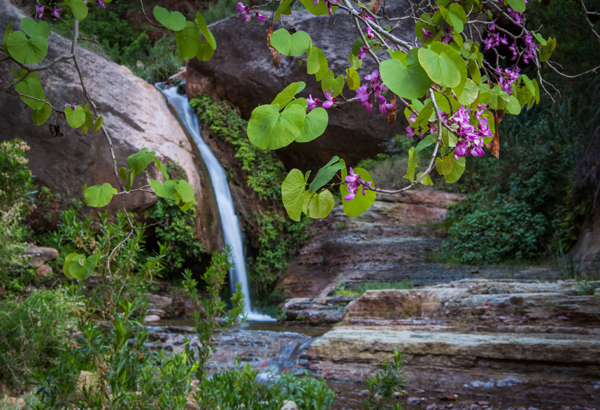FOR IMMEDIATE RELEASE
GRAND CANYON NATIONAL PARK, AZ — The Grand Canyon Trust opposes Stilo Development Group and the Town of Tusayan’s proposal to draw down precious groundwater to enable the massive growth of commercial development at the Grand Canyon’s south rim.
The Trust urges the U.S. Forest Service to deny the application for road and utility easements for the project because they would pave the way for thousands of new hotel rooms, an RV park, a conference center, and a resort. This development would significantly increase the pumping of groundwater from deep wells and further threaten the sole source of the Havasupai Tribe’s drinking water. And it could cut the flow of hundreds of the Grand Canyon’s life-giving seeps and springs below the south rim.
The proposed easements would also strain existing infrastructure by enabling the developer to add nearly 1.8 million square feet of commercial development including 2,500 hotel rooms and 194 acres of residential construction. They would amplify adverse impacts of urban sprawl and congestion on the surrounding national forest and park, already stressed by accelerating visitation. The Forest Service should not grant easements for developments that do not align with the public’s interest in protecting the Grand Canyon’s groundwater or that harm the Grand Canyon for future generations.
The Grand Canyon Trust recognizes the chronic need to provide housing and community services for hundreds of existing workers. Tusayan’s development partner has donated 40 acres of private inholdings earmarked for residential development. The Trust would support an application for easements to access these parcels, provided that groundwater is not used to meet residential needs.
The Grand Canyon Trust supports the National Park Service, the Havasupai Tribe, and the Forest Service in protecting the integrity of the entire Grand Canyon, including surface and groundwater sources that supply seeps, springs, and streams within the canyon. These waters sustain the Grand Canyon’s living communities, and they must not be impaired.
Background
View in full screen (suggested for mobile)
The Town of Tusayan is located at the southern entrance to Grand Canyon National Park. With more than 6 million visitors entering the park each year, existing developments are not meeting the demand for employee housing, services, and supporting infrastructure.
Tusayan and its investment partner, Stilo, have resubmitted an easement proposal to build 5.35 miles of roads ― disturbing 52 acres of the Kaibab National Forest ― to develop two private inholdings, a total of 350 acres of private land.
National park managers and leaders of the nearby Havasupai Tribe opposed a similar proposal submitted in 2016 because it threatened scarce water supplies and would have had substantial and adverse impacts on the surrounding tribal and national-park lands.
In 2016 the Kaibab National Forest supervisor rejected the proposal, stating it “is deeply controversial, is opposed by local and national communities, would stress local and Park infrastructure, and have untold impacts to the surrounding Tribal and National Park lands.”
Like the proposal submitted in 2016, the current proposal fails to address the 14 screening criteria set forth in federal regulations, including the provision that it must not interfere with the use and protection of surrounding public and tribal lands. Therefore, the U.S. Forest Service must reject the application and any future applications that do not meet these minimum thresholds established in law.
Stilo and Tusayan’s latest proposal aims to supply new residential development with water from existing wells that currently support the entire Town of Tusayan. These wells pump water from the Redwall-Muav aquifer, which is more than 3,000 feet beneath the surface and is the primary source for the Grand Canyon’s seeps, springs, and streams. The National Park Service has documented long-term declines in the flows of springs beneath the canyon’s south rim.
In 2014, Tusayan was pumping 57 million gallons of water per year. The National Park Service estimated that Tusayan’s water use could exceed 220 million gallons per year by 2024 if plans for the Stilo development were to move ahead.
In 2016, the Havasupai Tribe filed a lawsuit against the private companies that own Tusayan’s wells because they are threatening the tribe’s sole source of water and the plants and wildlife on tribal land and in Grand Canyon National Park. Although the courts have set aside the suit for technical reasons, current and future pumping of groundwater from the aquifer will cause irreparable harm to the tribe.
The Grand Canyon Trust shares the Havasupai Tribe’s concerns about Tusayan’s current use of groundwater. The Kaibab National Forest rejected the 2016 proposal because of “significant evidence” that the proposal was not in the public interest.
Allowing new developments to pump more water from a shrinking supply of groundwater would do irreparable harm to Grand Canyon National Park and to the Havasupai Tribe, and it would not be in the public interest.
Therefore, the Grand Canyon Trust opposes Stilo Development Group and the Town of Tusayan’s road easement application.

